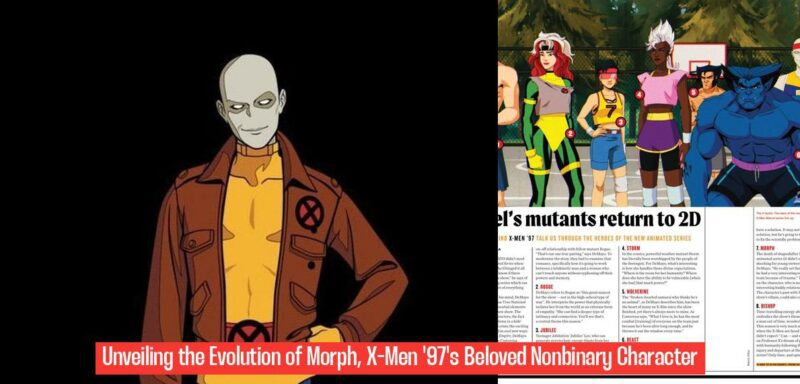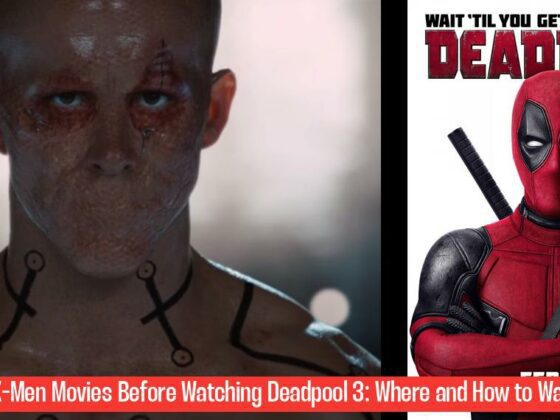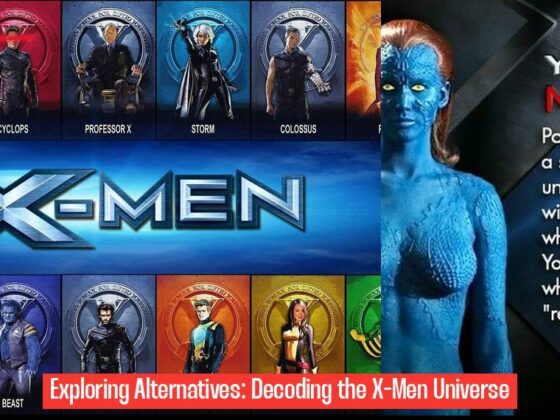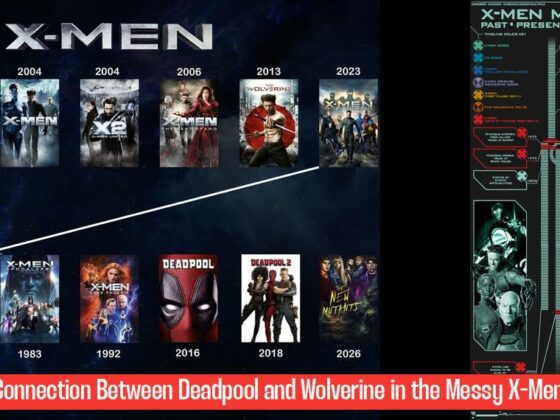Introduction to Morph: X-Men ’97’s Popular Nonbinary Character
Hey there, fellow mutant enthusiasts! Today, we’re diving into the intriguing world of X-Men ’97 and the buzz surrounding the popular nonbinary character, Morph. Picture this: The X-Men universe is like a box of chocolates – you never know what amazing new characters you’re going to unwrap next!
Let’s start by shedding some light on our shape-shifting hero, Morph. With the upcoming X-Men ’97 series, Morph has undergone quite a transformation (pun intended!). Now identified as nonbinary but without explicit use of the term in the show, our beloved character sports a unique look: light gray skin, white eyes, a bald head, and no nose. Looking reminiscent of The Chameleon from Spider-Man with that signature white mask – talk about a striking appearance!
But here’s where things get even more exciting… Curious about how this evolution came to be? Stick around as we unravel everything you need to know about X-Men ’97’s popular nonbinary character step by step. Trust me; it’s going to be one MUTANTastic journey!
Morph’s Evolution: From Kevin Sydney to Nonbinary Icon
In X-Men ’97, our beloved shapeshifting hero, Morph, has undergone a remarkable evolution from Kevin Sydney to a nonbinary icon. The revelation of Morph’s queerness in the series has been met with enthusiasm by fans worldwide. Although not explicitly stated in the show, Morph is depicted as nonbinary and uses they/them pronouns, making them a groundbreaking character in the Marvel universe. The decision to portray Morph as nonbinary resulted in a significant change in their appearance, featuring unique traits like light gray skin, white eyes, a bald head, and no nose – truly standing out as an iconic figure.
The journey of Morph’s character development is truly captivating. From their roots as Changeling in the original comics to their resurrection and transformation into the beloved Morph featured in X-Men: The Animated Series and now X-Men ’97, this shapeshifter has taken fans on a wild ride. Embracing their nonbinary identity has not only reshaped Morph’s appearance but also solidified their role as a key member of the esteemed X-Men team.
Morph’s gender identity being revealed as nonbinary opens up a world of representation and inclusivity within the superhero realm. This progressive portrayal not only adds depth to Morph’s character but also reflects the evolving landscape of diversity and acceptance within popular media. It goes to show that superheroes come in all forms – or should we say shapes?
The use of they/them pronouns for Morph sets an important precedent for inclusivity and representation within animated series. It challenges traditional gender norms and celebrates diversity in all its forms. So, fellow mutant enthusiasts, embrace this transformative journey of Morph from Kevin Sydney to a nonbinary icon – it’s indeed an evolution worth celebrating!
The Impact of Morph’s Nonbinary Identity on X-Men ’97
In X-Men ’97, Morph’s nonbinary identity has made a significant impact on the show’s narrative and fan reception. Confirmed by showrunner Beau DeMayo, Morph’s transformation into a nonbinary character with a striking appearance has sparked both enthusiasm and discussion among viewers. The decision to depict Morph as nonbinary not only aligns with their shapeshifting abilities but also represents a crucial step towards inclusivity and representation within the Marvel universe.
The revelation of Morph’s queerness in X-Men ’97 has been met with positivity from fans, highlighting the importance of diverse and inclusive storytelling in mainstream media. Despite some initial surprise among audiences, the portrayal of Morph as nonbinary has been well-received for its progressive approach to gender representation. By embracing Morph’s nonbinary identity, X-Men ’97 sets a precedent for authenticity and diversity within animated series.
Morph’s journey from the original comics as Changeling to their evolution as a nonbinary icon showcases the character’s growth and significance within the X-Men universe. Their unique appearance in X-Men ’97 reflects not only their newfound gender identity but also symbolizes a broader shift towards more inclusive storytelling in superhero narratives. Through this transformation, Morph becomes not just a hero with shapeshifting abilities but also a trailblazer for LGBTQ+ representation in popular media.
The inclusion of Morph as a nonbinary character in X-Men ’97 challenges traditional gender norms and stereotypes, paving the way for greater visibility and acceptance of diverse identities in superhero stories. As fans continue to celebrate this groundbreaking representation, it emphasizes the importance of embracing characters like Morph who defy conventions and inspire inclusivity within our favorite superhero universes.Would you like more details about how this representation contributes to broader conversations about diversity in media? Let me know!
Fan Reactions and Representation: Morph as a Queer Character
In X-Men ’97, the confirmation that Morph is queer has been warmly welcomed by fans, adding a layer of representation and inclusivity to the beloved character. The revelation about Morph’s non-binary identity aligns perfectly with their shape-shifting abilities, making them a unique and groundbreaking figure in the Marvel universe. This bold decision by the show’s creators emphasizes X-Men ’97’s commitment to reflecting the diverse spectrum of human experiences and identities.
Morph’s evolution into a non-binary character in X-Men ’97 not only showcases the show’s progressive approach to gender representation but also sparks meaningful conversations about diversity within media. Fans have embraced this significant change in Morph’s character, celebrating the show’s dedication to inclusivity and LGBTQ+ visibility. The acceptance of Morph as a non-binary hero highlights Marvel’s willingness to push boundaries and break stereotypes in superhero storytelling.
The positive reception of Morph as a queer character in X-Men ’97 demonstrates the importance of authentic representation and resonant storytelling. By portraying Morph as non-binary, the series not only pays homage to the character’s essence but also sets an empowering example for embracing individuality and self-expression. As viewers continue to appreciate and engage with this transformative journey of understanding identity, one thing is clear: diversity truly shines brightly in Mutant Town!
Is Morph X-Men ’97 nonbinary?
Yes, X-Men ’97 showrunner Beau DeMayo confirmed that Morph is non-binary.
Is Morph now non-binary?
Yes, the character Morph, who originally appeared as a male named Kevin Sydney, has been adapted to be non-binary in the new X-Men ’97 adaptation.
Is Morph queer?
Yes, Morph is confirmed to be queer in X-Men ’97, which has been positively received by fans.
Is there LGBTQ representation in X-Men ’97?
Yes, Morph has been confirmed as non-binary in X-Men ’97, providing LGBTQ representation in the show.



